A Moment In...The Carretera Austral
"The very basic core of a man's living spirit is his passion for adventure. The joy of life comes from our encounters with new experiences, and hence there is no greater joy than to have an endlessly changing horizon, for each day to have a new and different sun". Christopher McCandless
Like most things in life, travelling by car has its ups and downs. The advantages are many: pace and direction is entirely at our leisurely control. Furthermore, we have privilege of being able to move our home any which way we please and be guaranteed a cozy place to sleep at night. On the other hand, there are long distances, unpaved potholed roads, and mechanical failures that are apt to puncture our happy travel bubble and leave us frantic as the air rushes out, searching for mechanics, gas stations, or scanning the map for another route all together. Our slow zigzag from Santiago to Puerto Montt was a pleasant meander: lingering in the places that pleased us, or packing up and moving on when we felt the road calling. Yet it wasn't until we drove onto the ferry heading south towards Hornopiren that we truly experienced the joy of driving in and of itself. The Southern Highway, also known as Ruta 7 or The Carretera Austral introduced us to the iconic allure of the open road. Around each corner lay something more beautiful than the last, the scenery growing wilder the farther South we drove. The Carretera Austral runs 1240 km through remote and rural Patagonia. Construction on the highway began in 1976, while the final connecting road was completed in 2000. The highly isolated road winds through increasingly rough and impressive terrain: glaciers, steep mountains, forests and fjords. Recently, there has been an effort to pave the highway, turning the mix of pothole marked gravel and mud into smooth asphalt. An astronomical task that involves blasting huge rock faces away, the construction proved more of a hindrance to our drive, as the road conditions in construction zones were almost impassable on our tiny set of wheels. The newly paved sections proved to be swiftly flowing luxurious vacations from the slow rattling crunch of gravel under tires. Yet the gravel adds to the allure. There is something so fiercely wild and thrillingly isolated about the Carretera Austral ... perhaps the closest you will ever feel to nature while driving on a highway. On our drive down, we paused in many stunning locations and had we the time we would have stopped at many more. Yet nothing compares to the feeling of driving this road, this savagely beautiful feat of mankind cutting through the heart of the outdoors.
Part one: Ferry to Hornopiren and Beyond
We began our journey by sea. A short ferry in the damp evening mists brought us to Hornopiren, a small town teaming with birds, fish and the quiet energy that suggests life goes on as a day to day matter here. We spent two nights camped on the dewy grass beside a river that bled out into the sea, before embarking on a second, longer ferry to Leptepu. The three-hour journey was a sunny albeit chilly affair, sweeping through the fjords, while tall cliffs ripe with rainforest foliage loomed up beside us and porpoises played in our wake. Finally, after docking and a quick drive to the opposite inlet, we boarded our final ferry to Caleta Gonzalo and the northern entrance of Park Pumalin. Tall trees, wild seas and the snaking gravel road began to stir in us the feeling that we were headed far away from cities and infrastructure with which we were accustomed.
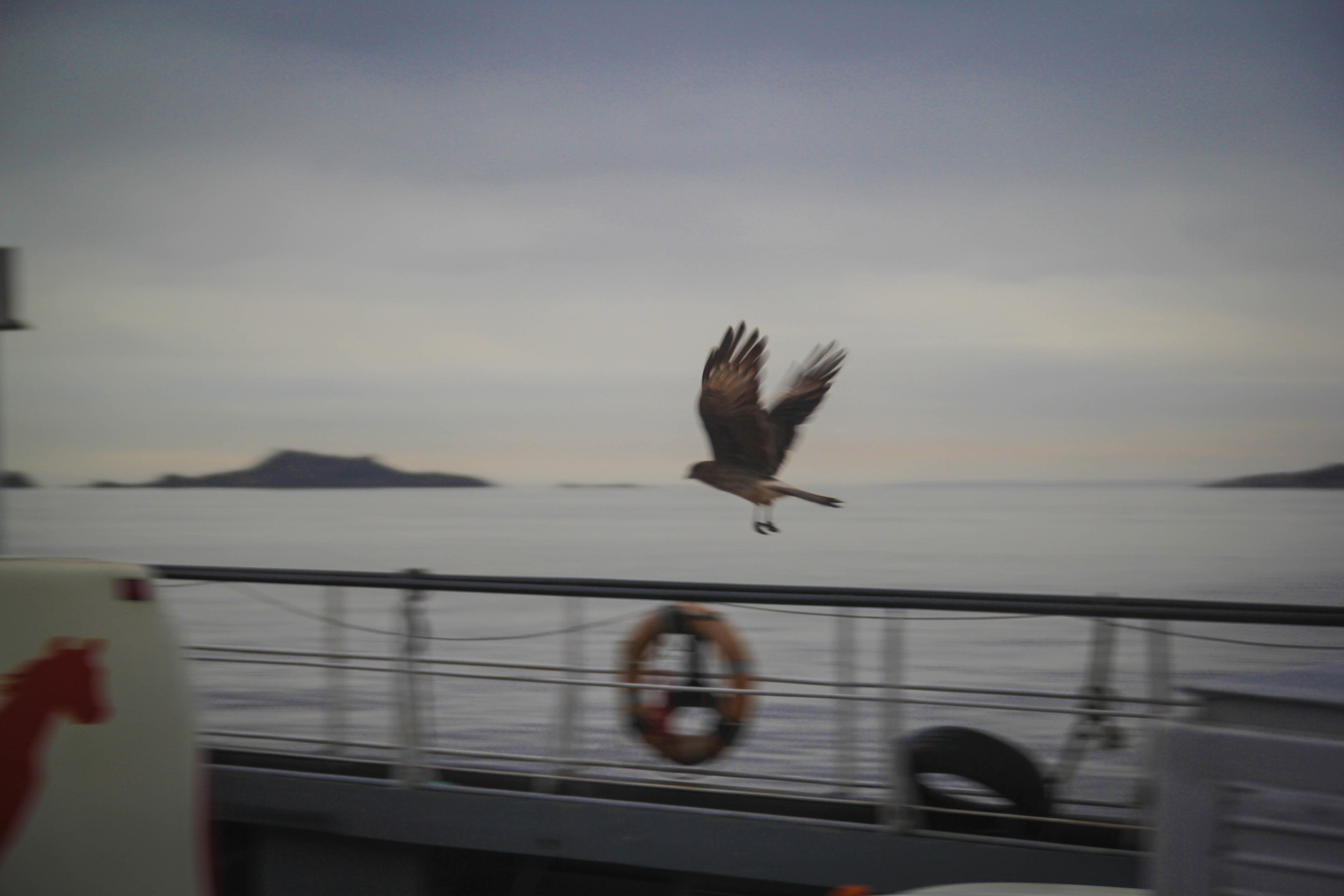

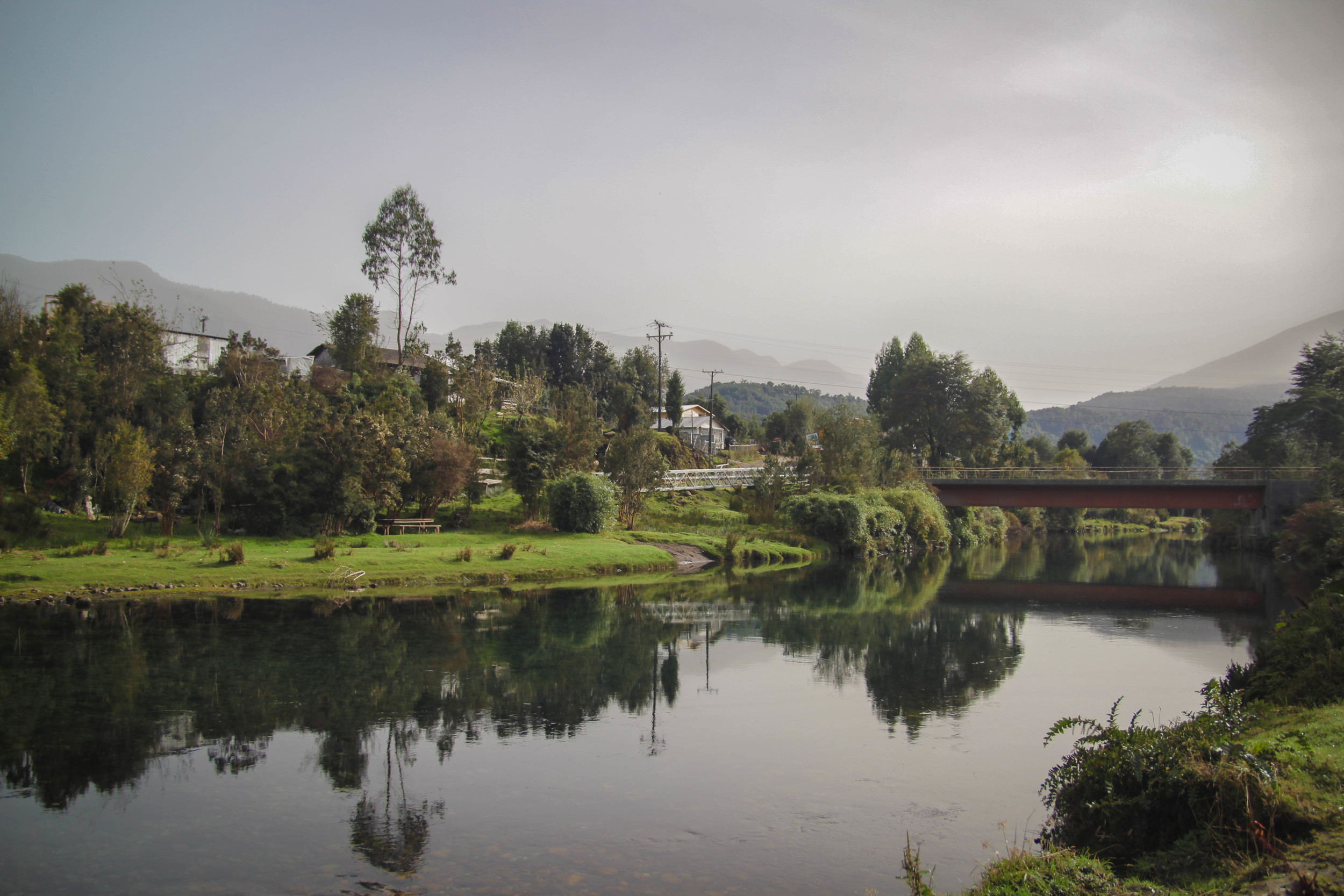

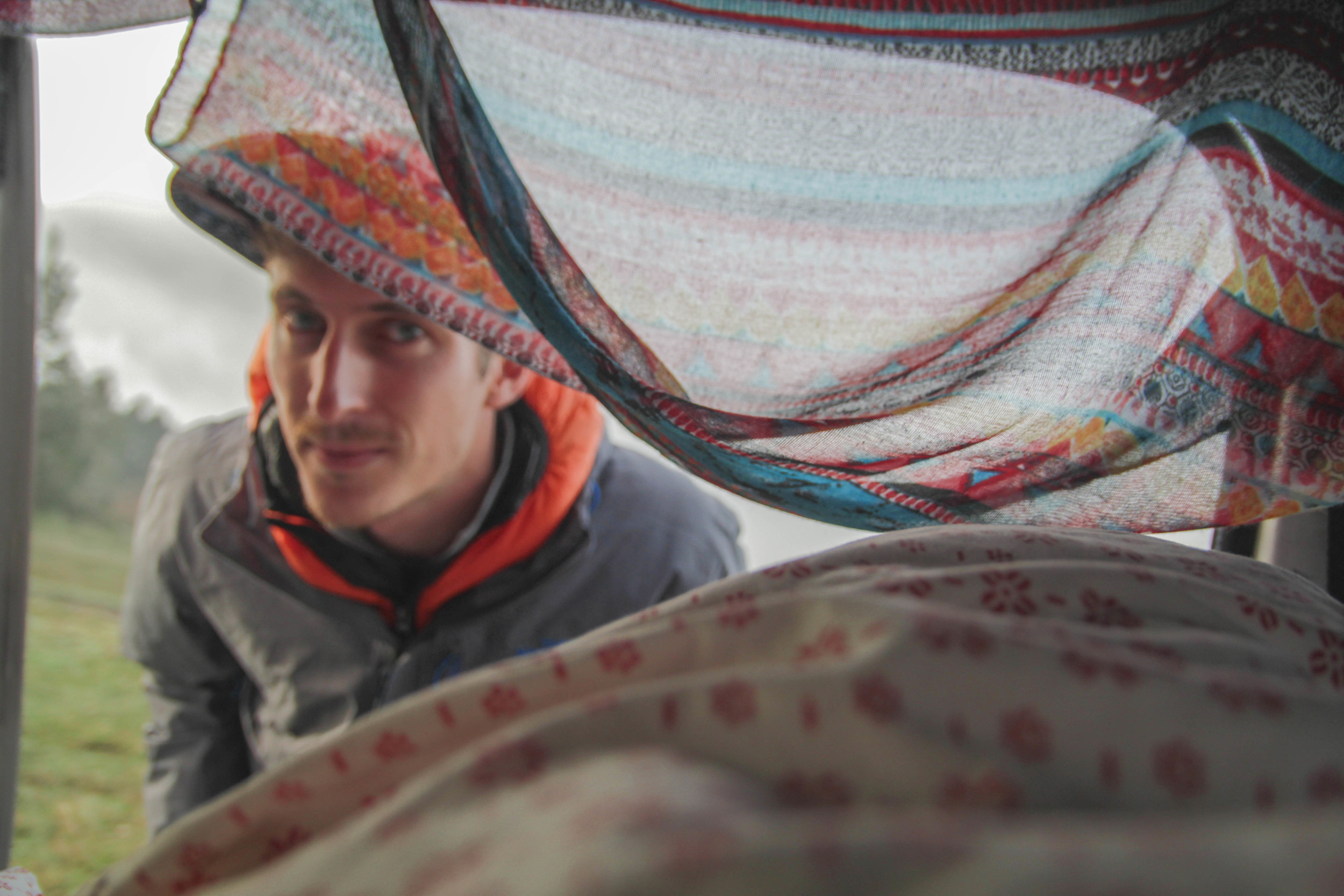
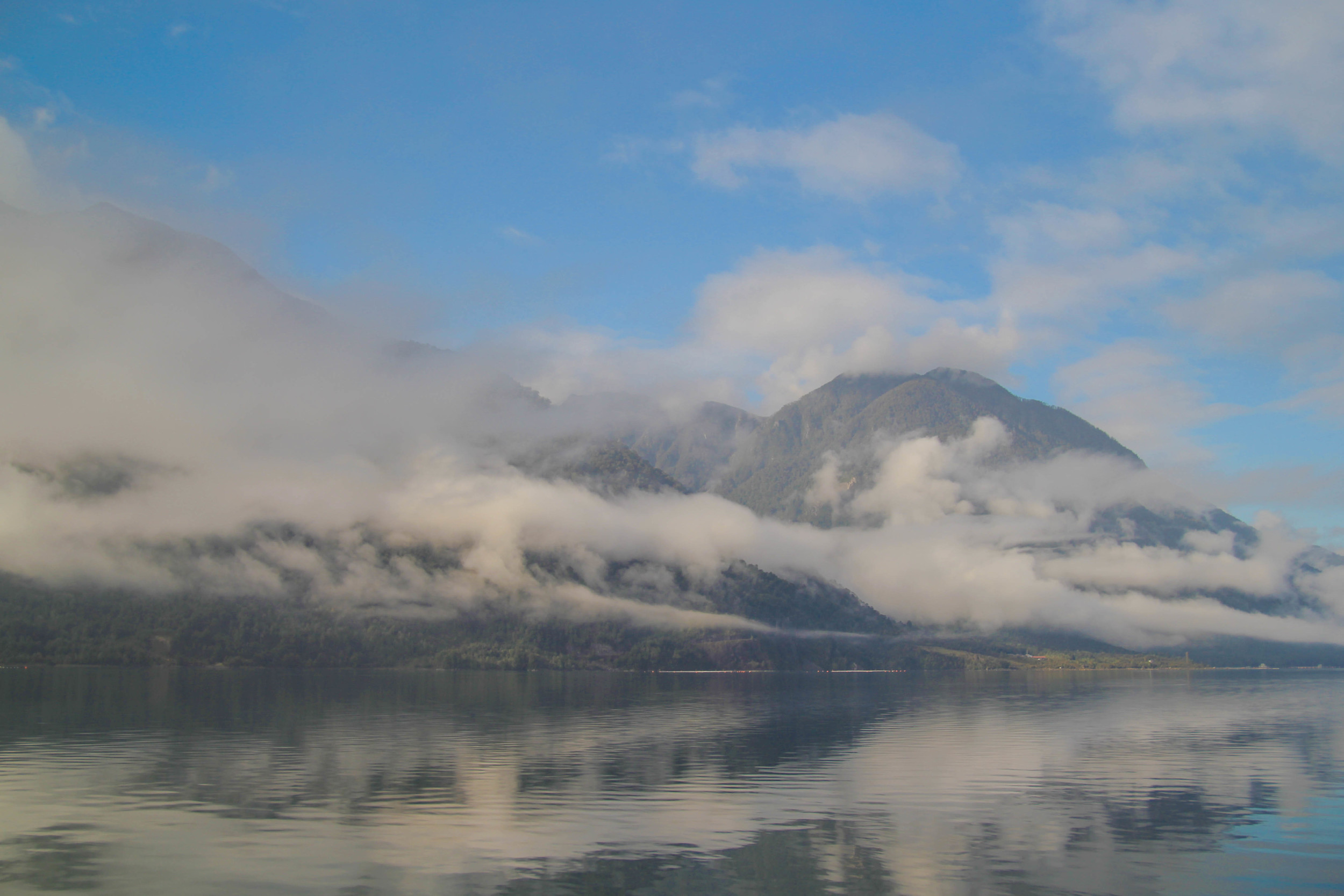

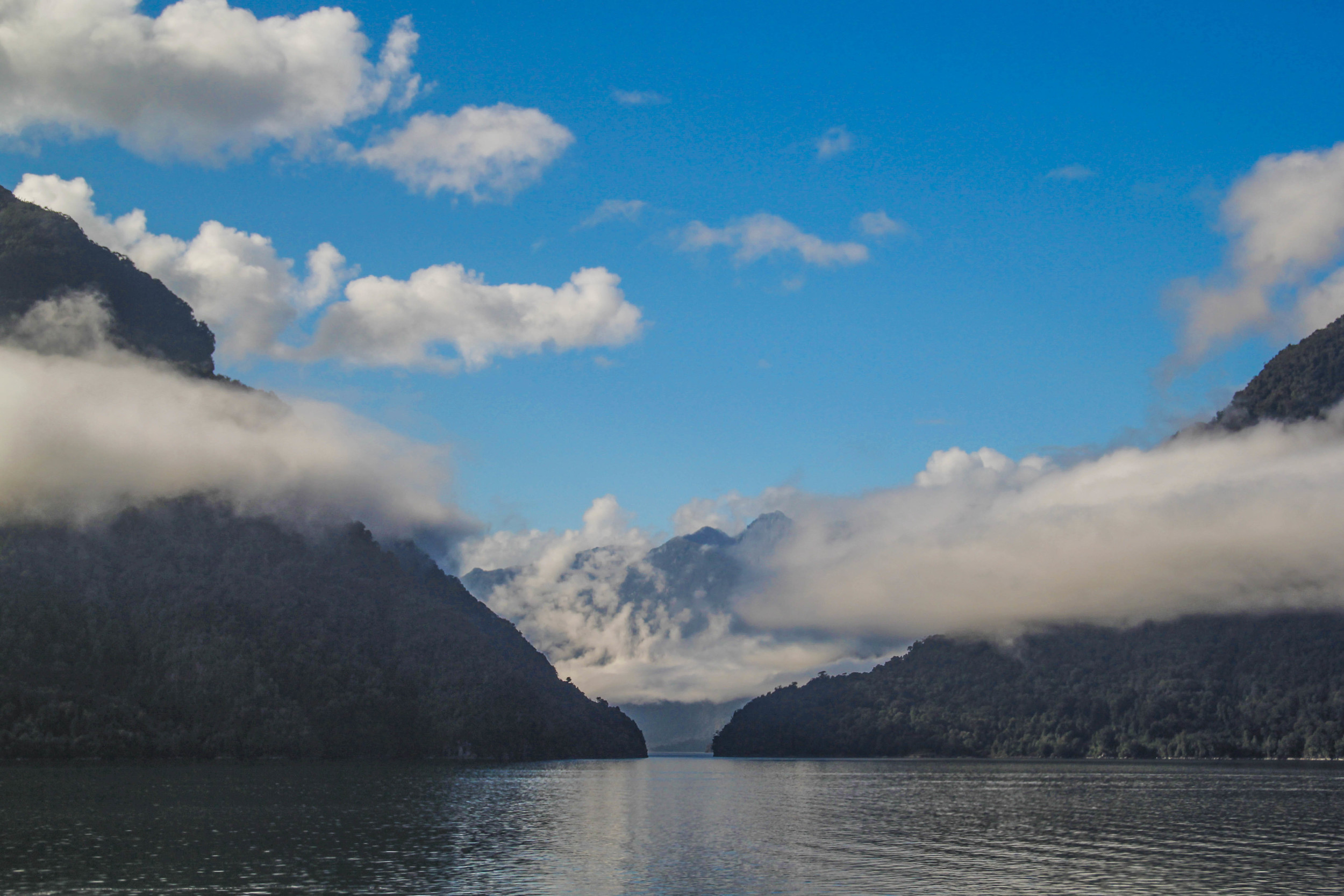

Part two: Pumalin Park and Chaiten
Despite being born and raised in eternally drizzling Vancouver, I utterly loathe the rain with every cold moisture-hating fibre of my being: it dampens my clothes, my mood and my desire to step foot outside to appreciate anything natural. Perhaps the surroundings I have grown up with have faded and become unappreciated in the way that all familiar stimuli recede unnoticed into the background. Indeed, the lush effects of water on Vancouver vegetation have long gone ignored by me in favour of complaining about having to wear rain boots and being pressed up against every musty damp backpack while on the bus. Yuck.
Our foray into Park Pumalin was a much-needed dose of rainforest: so green, so lush and novel enough to remind me that where there is lots of rain, there is plenty of life. Park Pumalin is comprised of nearly 800,000 acres of private nature reserve courtesy of the conservation efforts of Doug Tompkins (formerly of The North Face). When you settle into the thick of this park you get the sense that this is what nature should look like at its healthiest. Every leaf, every tree, every fern and crawling vine grow to incredible sizes in the most vibrant shades of green. The vegetation is impossibly lush, and beyond that, the panoramic views are a dazzling 360 degrees of rolling hills, glaciers, volcanoes and rivers, while the Pacific crashes along its western shores. The park has many hikes and different places to camp, and an overall design so tasteful and subtle that you cannot help but wish that more millionaires with a vested interest in exploring and conservation would decide to invest in the creations of parks. Indeed, Doug Tompkins and his foundation Tompkins Conservation have taken on the initiative to create more national parks in Patagonia, with a focus on conserving and recovering wildlife, vegetation and implement a movement within Chilean and Argentinean farming towards organic gardening and sustainability.
Housed within the boundaries of Pumalin Park is Volcano Chaiten. The volcano is unobtrusive from a distance, save but a little steam curling from its peak to meet the clouds. However, as you draw near you bear witness to the incredible extent of the devastation left from its most recent eruption. In 2008, with little warning the long dormant Volcano Chaiten erupted for the first time in over 9000 years. At one point during the eruptive phase, the ash column reached as high as 30 kilometres into the sky, over twice the height of the smoke plume produced during the explosion we witnessed on Volcano Calbuco. Pyroclastic flows and mudslides wreaked havoc on the surrounding forest and deposited up to a meter of mud and ash on the nearby town bearing its namesake. We hiked the volcano with more than a little trepidation in our hearts, our encounter with Calbuco a little too fresh in our minds. The short yet relentlessly steep hike is a moving, visceral lesson in the dichotomy of the destructive power of nature, and the incredible life force of the earth. Grey trees, robbed of their leaves by the blast, line the slopes as far as the eye can see. You can almost feel the force of the blast as you walk over horizontal corpses of vertical forest and debris flung far from home. Once we stepped onto the rim of the caldera, the extent of the damage came into focus: the trails of the mudflows extending out for kilometres until they meet the sea. Nevertheless, it was inspiring to notice how much has come back to life in less than ten years. Green bushes and shrubs have exuberantly pushed their way back into the grey palate, while emerald vines have wound themselves up the dead trees as if to return their leaves. The town of Chaiten too has bounced back, after temporarily being "shut down" by government post eruption. Our good fortune brought us to a hostel at the same time as a lively and charming bunch of travellers with a passion for good food: roast beef, crepes and home made bread were among the concoctions inspired in the warm kitchen. We savoured the moments of camaraderie and gourmet group cooking, a far cry from the silent pasta affairs that usually populate hostel kitchens.
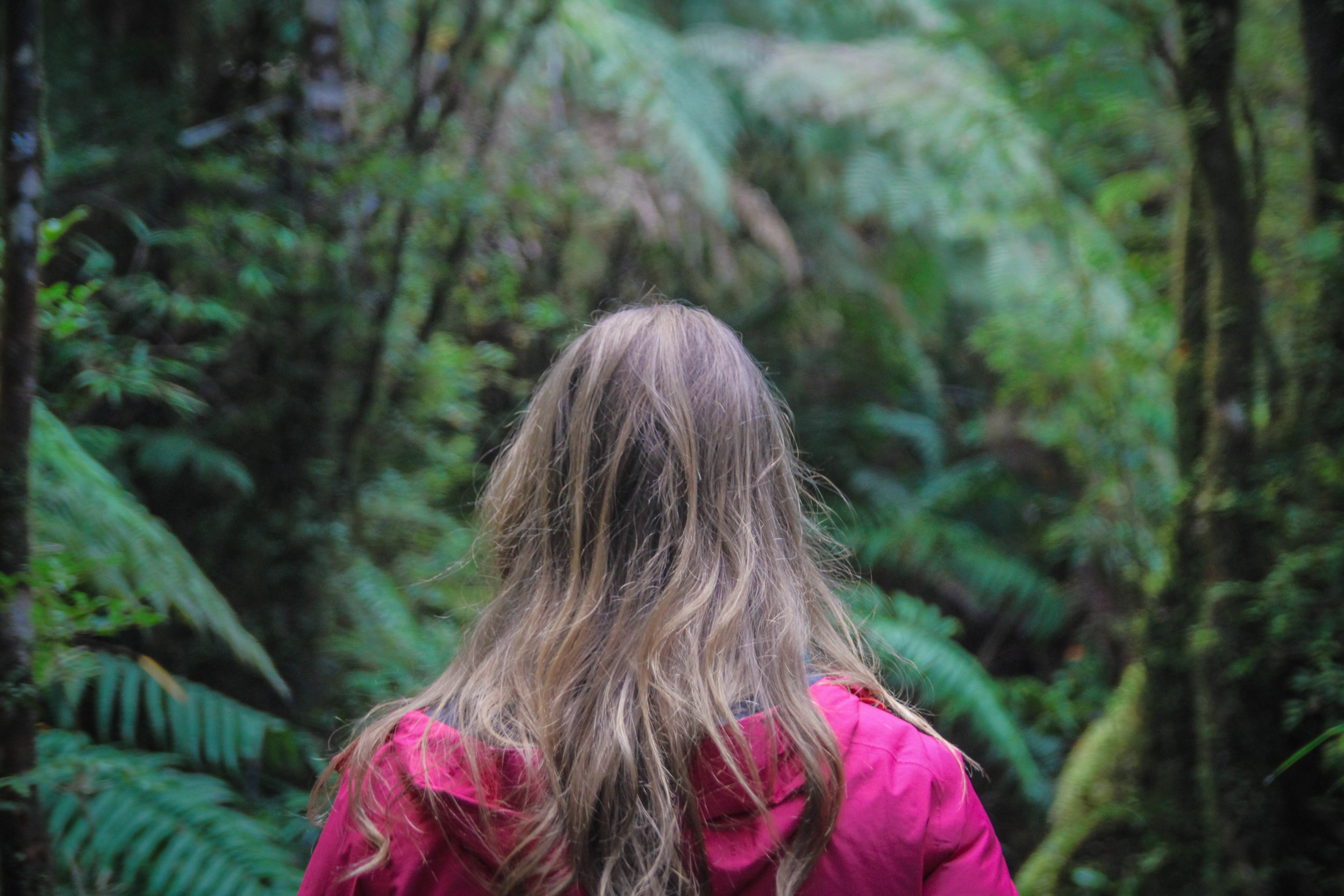
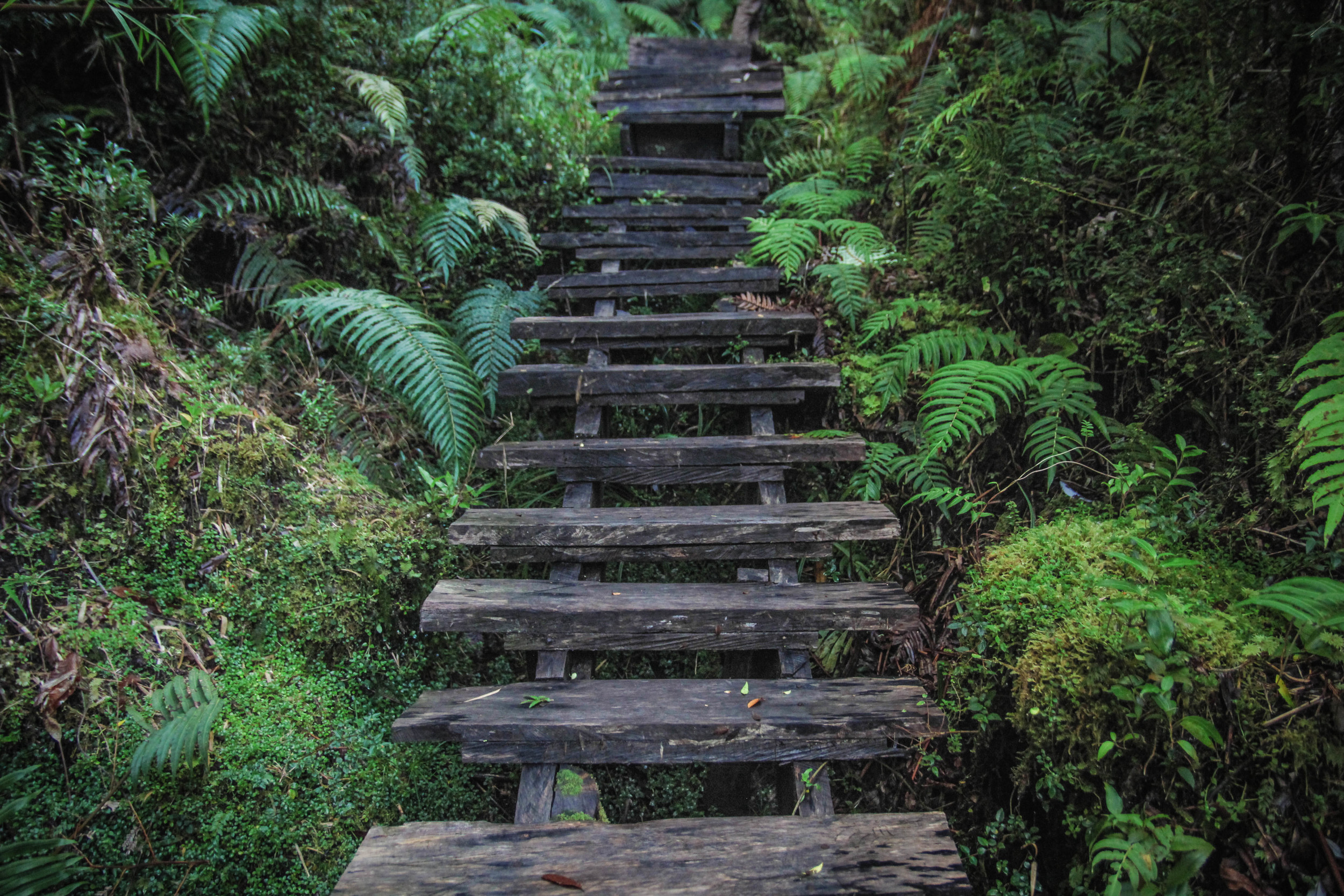

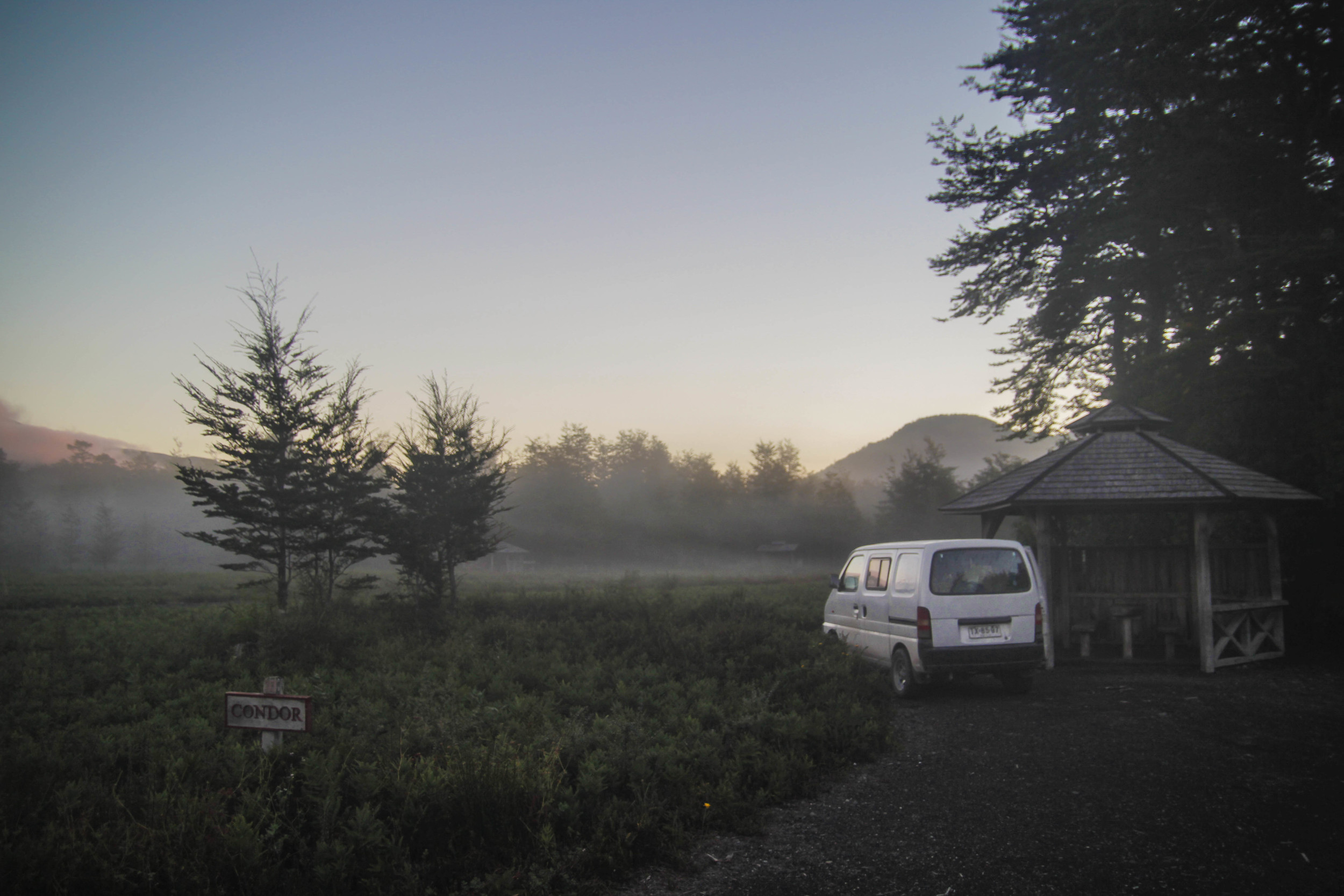

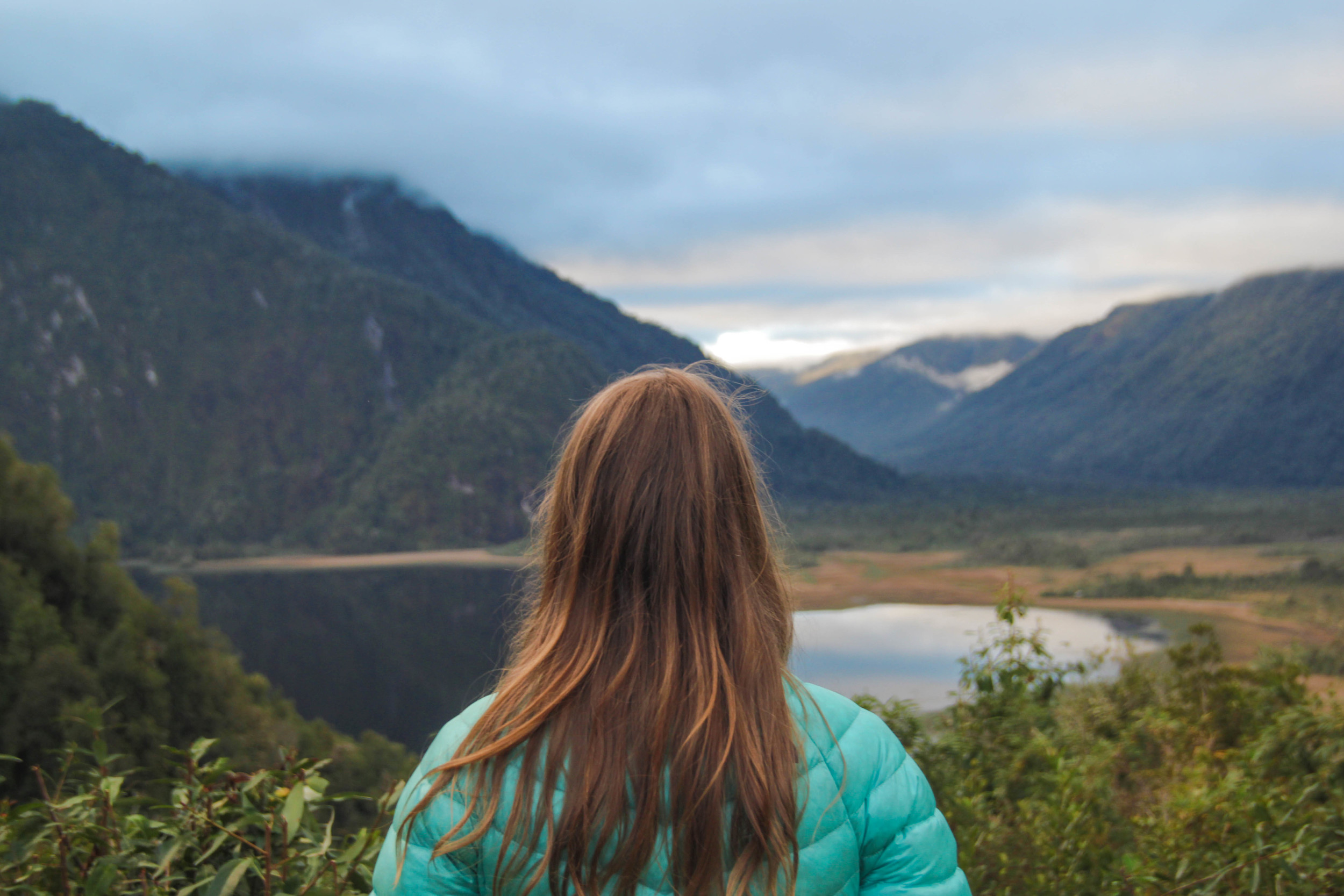
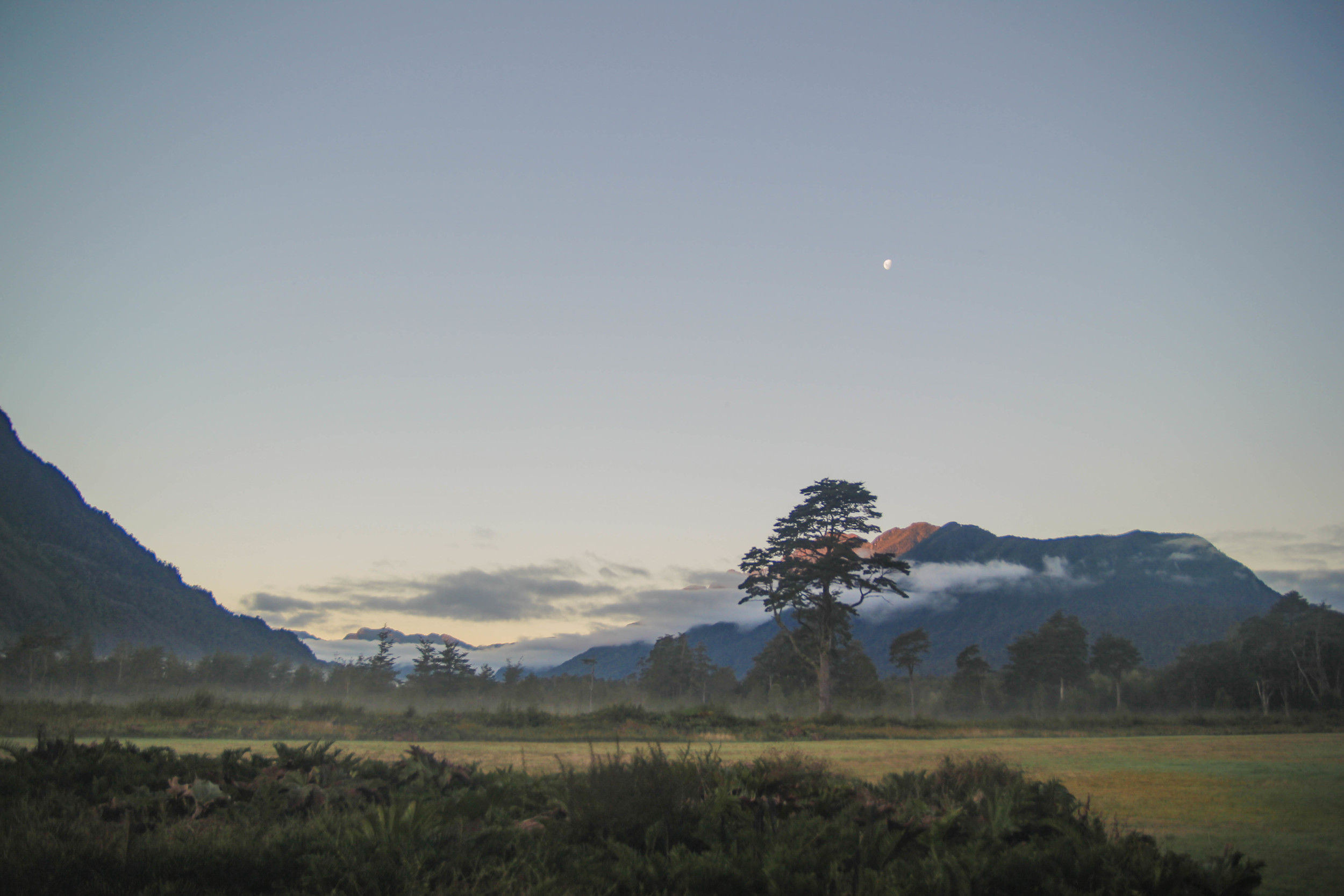



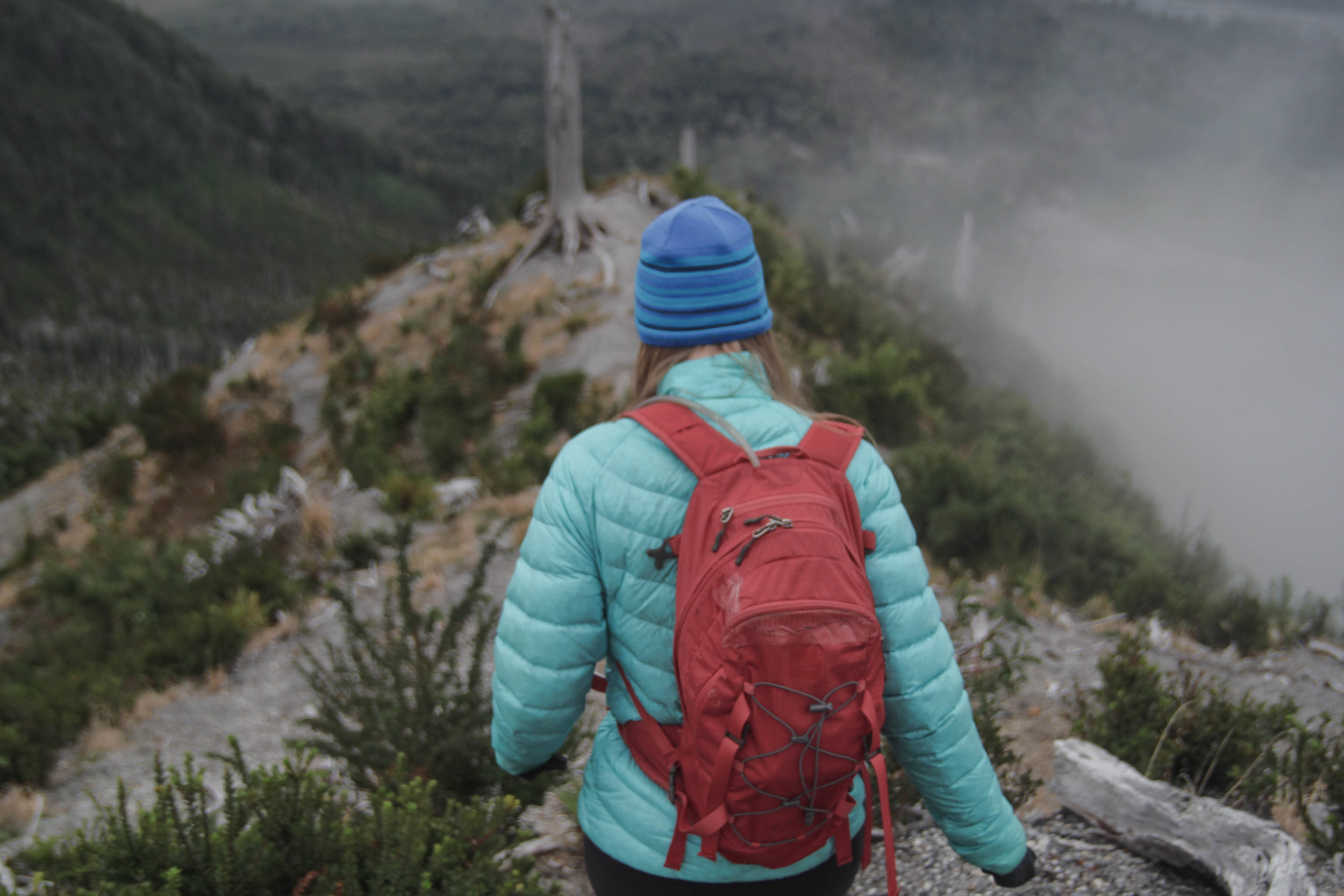
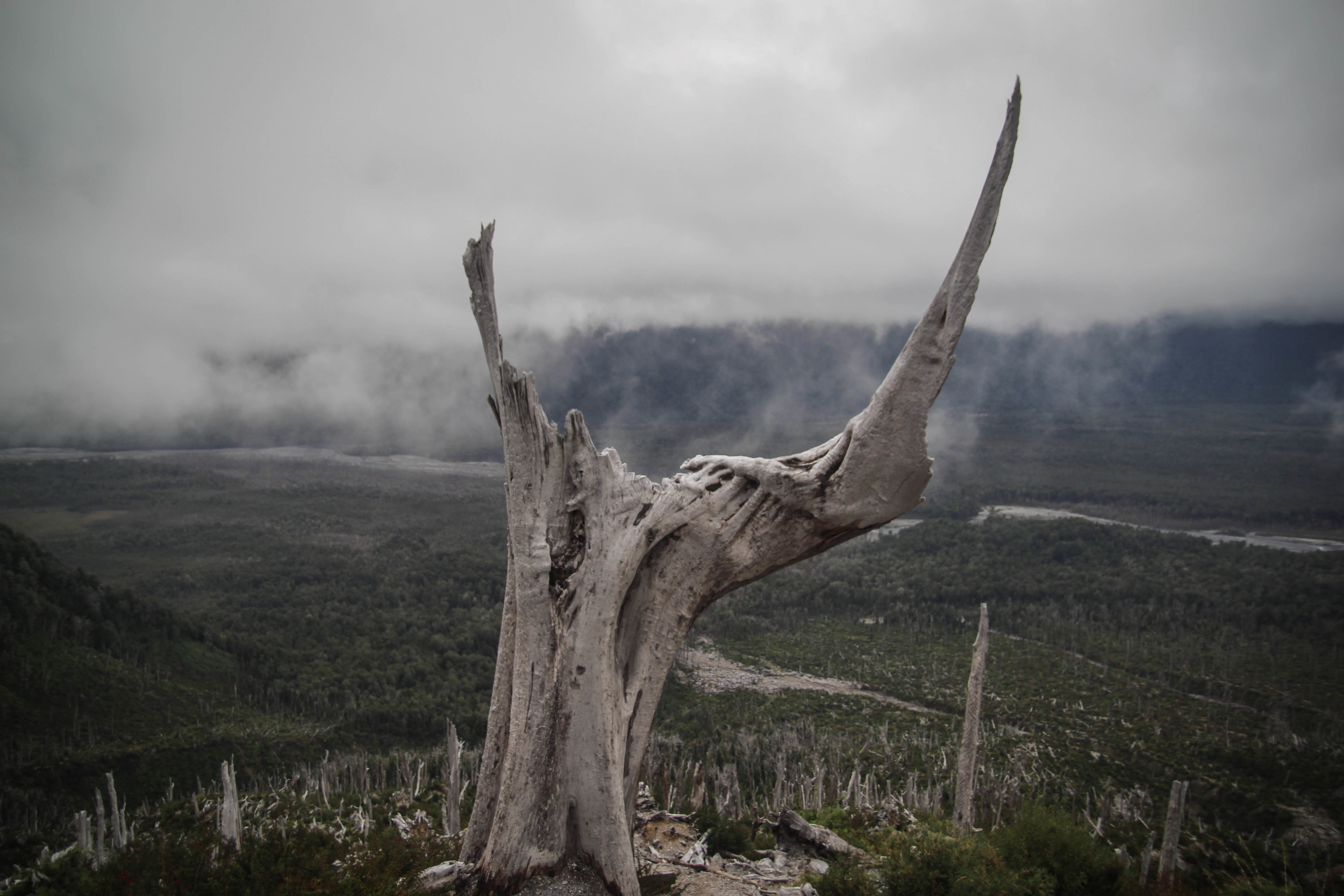
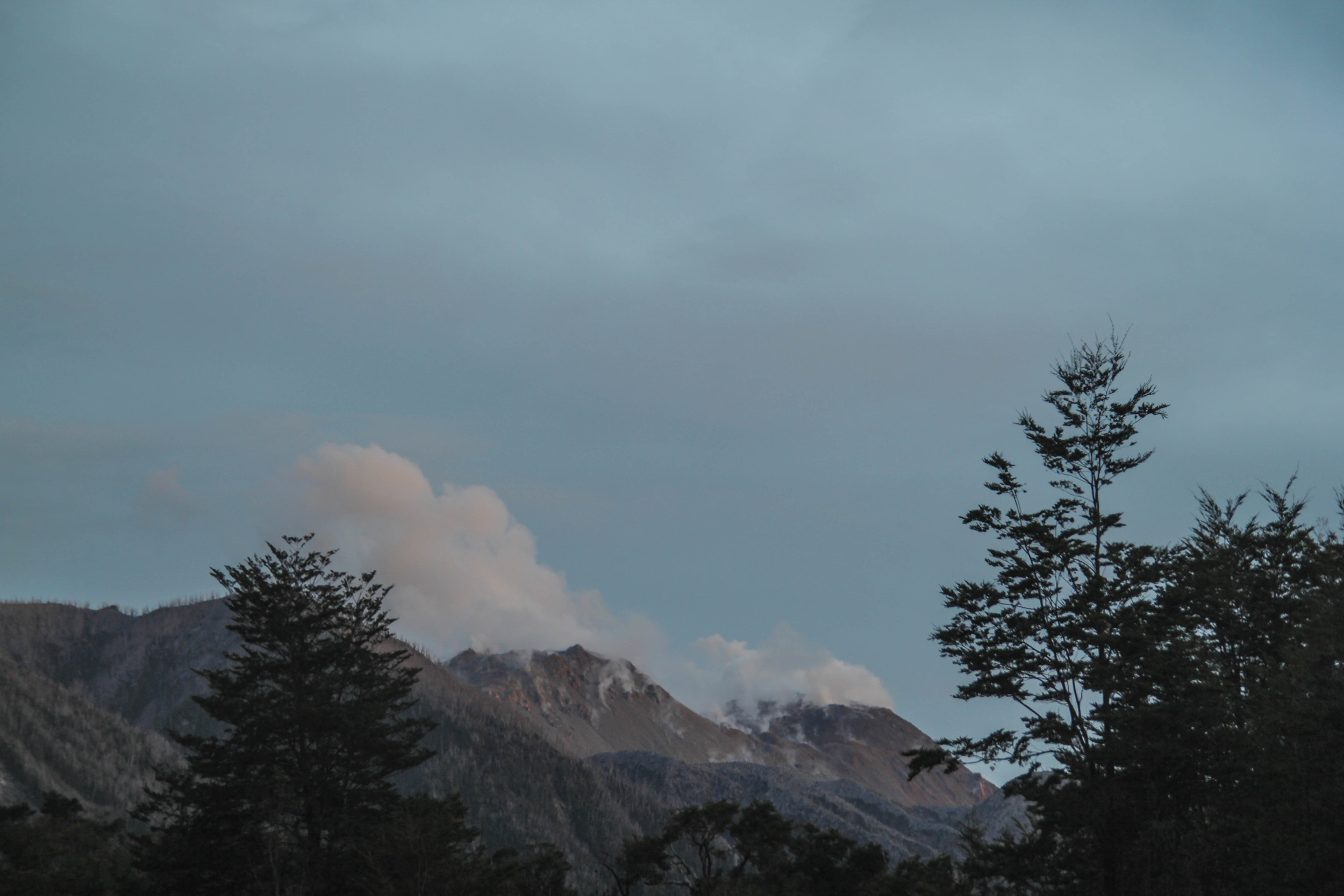




part Three: La Junta, puyuhuapi, and queulat national park
The road from Chaiten swept us off our feet with ever changing scenery. We battled against increasingly poor road conditions, as construction imposed restrictions on when you could drive on the highway and left the pre-paved sections a muddy mess of potholes, puddles and sharp stones. Often we would drive to the beginning of a construction zone and be forced to exercise our patience by waiting until our direction of traffic was allowed to cross the one lane zone. Yet the natural surroundings proved to be a thrilling distraction, even the smoothest sections were broken up by our need to pull over and marvel at the views. Towering mountains dusted in snow, with a fringe of red as the tree tops celebrated the end of fall. Glacier fed rivers rushed beside us until the road led us a fjord , momentarily reuniting us with the sea. Departing Chaiten, we cruised through to La Junta, and from there we explored oceanside Puyuhuapi, until we reached the damp and rich rainforest of Queulat National Park. Beyond this, the scenery began change, turning from mountains and lush greenery into a dryer climate: arid rock, desert, and endless farmland, marking the beginnings of our foray into Pampa.
















part Four: Coyhaique
Most of the towns we passed through were of the small and isolated kind. Humbly set against stunning natural backdrops, only a small smattering of tiny houses and farms dotted the landscapes, chimneys emitting a comforting cloud of smoke and perhaps one, maybe two small markets to purchase food at. Further down, Coyhaique becomes a mecca in the far south for all the things you start to miss: food, gas and internet. Having all the trappings of a larger town, and storefronts geared to outdoorsy tourists, it was pleasant to be able to shop around, sip real espresso (in lieu of Nescafe) and abuse the wifi to plan the next leg of our journey. Despite the denser population, Coyhaique still maintains a beautifully wild energy. It is nicely situated in the foothills of granite and snow covered peaks, with expansive farmland and pampa curling at its feet. We took the opportunity to recharge here and gear up for the next part of the drive, and our inevitable cross into Argentina.















Part five: Cerro Castillo
Cerro Castillo was an adventure of shape and colour. We entered the Cerro Castillo National Reserve just as dusk was beginning to hit the mountains and kiss them with the dying colours of sunset. The mountains were a veritable feast for the eyes, varying rock shapes, geological lines and snow capped peaks. Sometimes our "wild camps" are simply a stop between here and there: arrive at dark and hit the road straight after a rushed breakfast. On other occasions, we happen upon places that simply beg for us to stay and appreciate the surroundings. We stumbled upon such a spot at the beginning of the reserve and happily nestled our car underneath a waterfall, surrounded by rock walls in every direction and a sky that quickly dissolved from dusk into the faint light of millions of stars. This was the first location that truly began to remind us that winter is coming. The water froze on our dishes after washing them, and no matter how much down was piled on, neither of us could truly beat the cold. On the following morning, we embarked on a day hike in the direction of Cerro Castillo, the cold and our urge to get down south quickly negating the option of the 5 day circuit. Although chilly, our hike was an intense but highly enjoyable adventure.The colours of the valley spoke of the coming winter, the reds, orange and yellows beginning to fade into brown. Cerro Castillo ( Castle Hill) certainly lives up to its name. A towering sculpture of a mountain,comprised of sharp points cutting into the sky. A stone fortress that looked majestic from every angle, we couldn’t help ourselves from taking picture after picture.














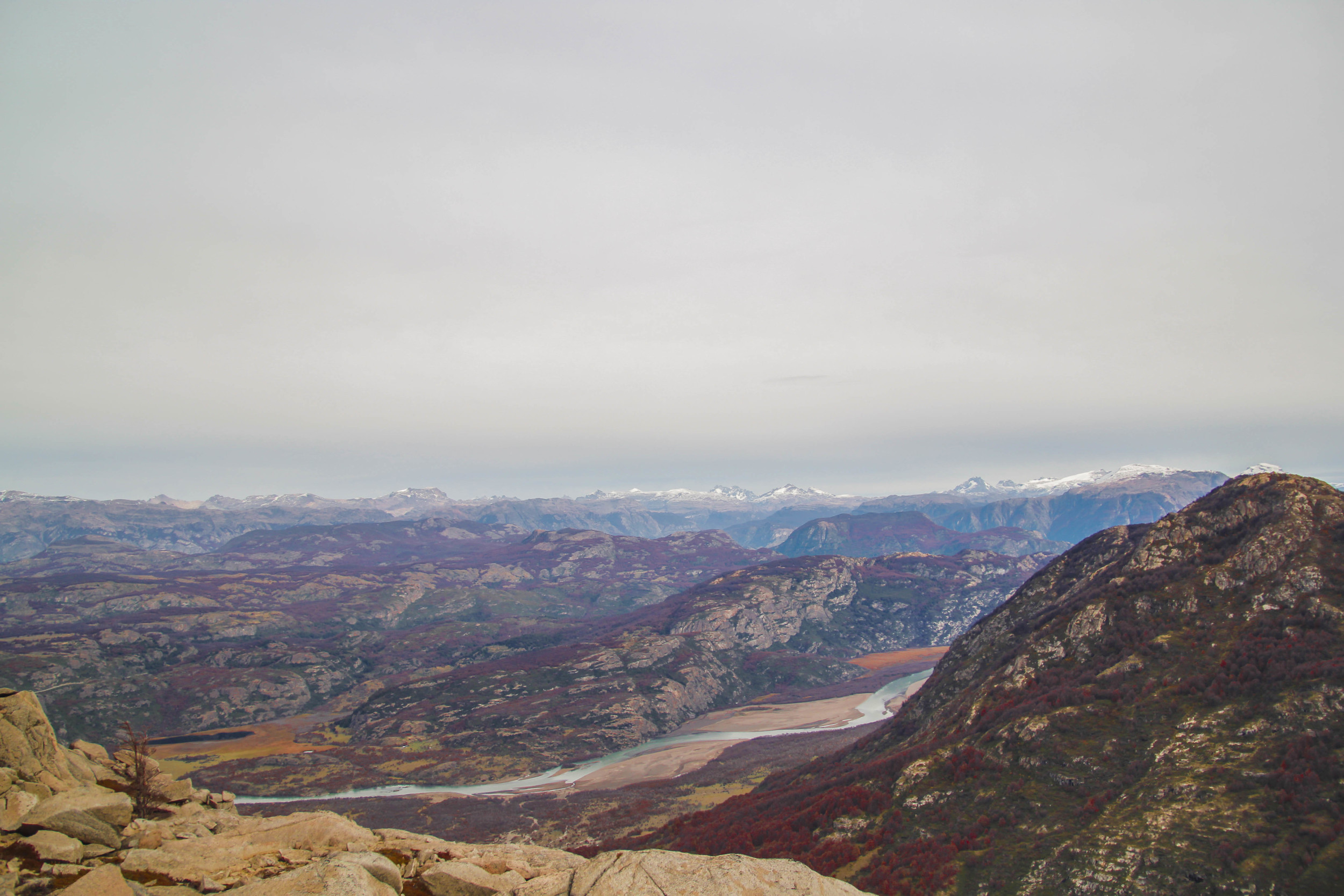




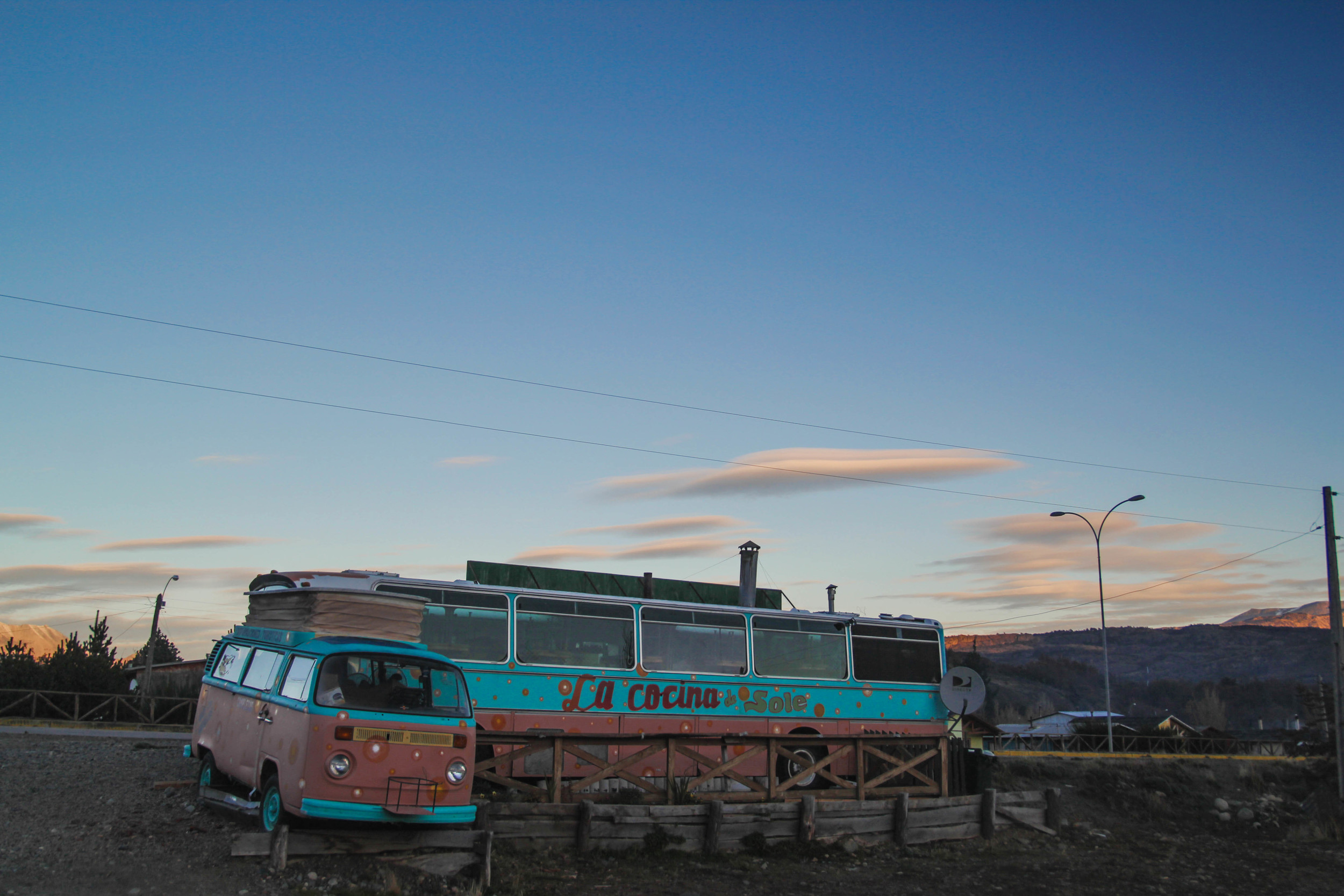






Part six: Lago General Carrera
Weary from our hike and sullen at the return to gravel and the prospect of driving another 200km through more construction, we hit a fork in the road. Our final destination on the Carretera Austral was Rio Tranquillo and the Marble Caves. The highway does indeed wind down further south towards Villa O'Higgens and the ice fields, however we had long ago set our sights on the Marble Caves as the denouement of our Carretera Austral excursion. Spurred on by our apprehension and some well intentioned yet misinformed advice from a fellow traveller, we chose to take a ferry across Lago General Carrera thinking we could see the caves just as easily from Chile Chico. The boat ride was surprisingly long and the waves much larger than you would expect from a lake, but then again Lago General Carrera is hardly a small pond. Spanning the border between Chile and Argentina and reaching a maximum depth of 590m, the lake is formerly of glacier origin, lending to its striking icy blue hue that seems made to reflect light. Upon arrival, we were devastated to find that reaching the Marble Caves from Chile Chico was a much more impractical and expensive venture and found the prospect of backtracking another 160km only to return this way again equally unpleasant. Instead, we swallowed our disappointment and turned our attention to collecting ourselves and organizing Marquito for his first border crossing into Argentina. Chile Chico benefits from a microclimate that allows for 300 days of sun out of a full year. We languished in the good weather for several days, the hassle of international car insurance and exchanging money less bothersome with the rays of sun casting a warm ethereal light on the lapping shores of the lake.


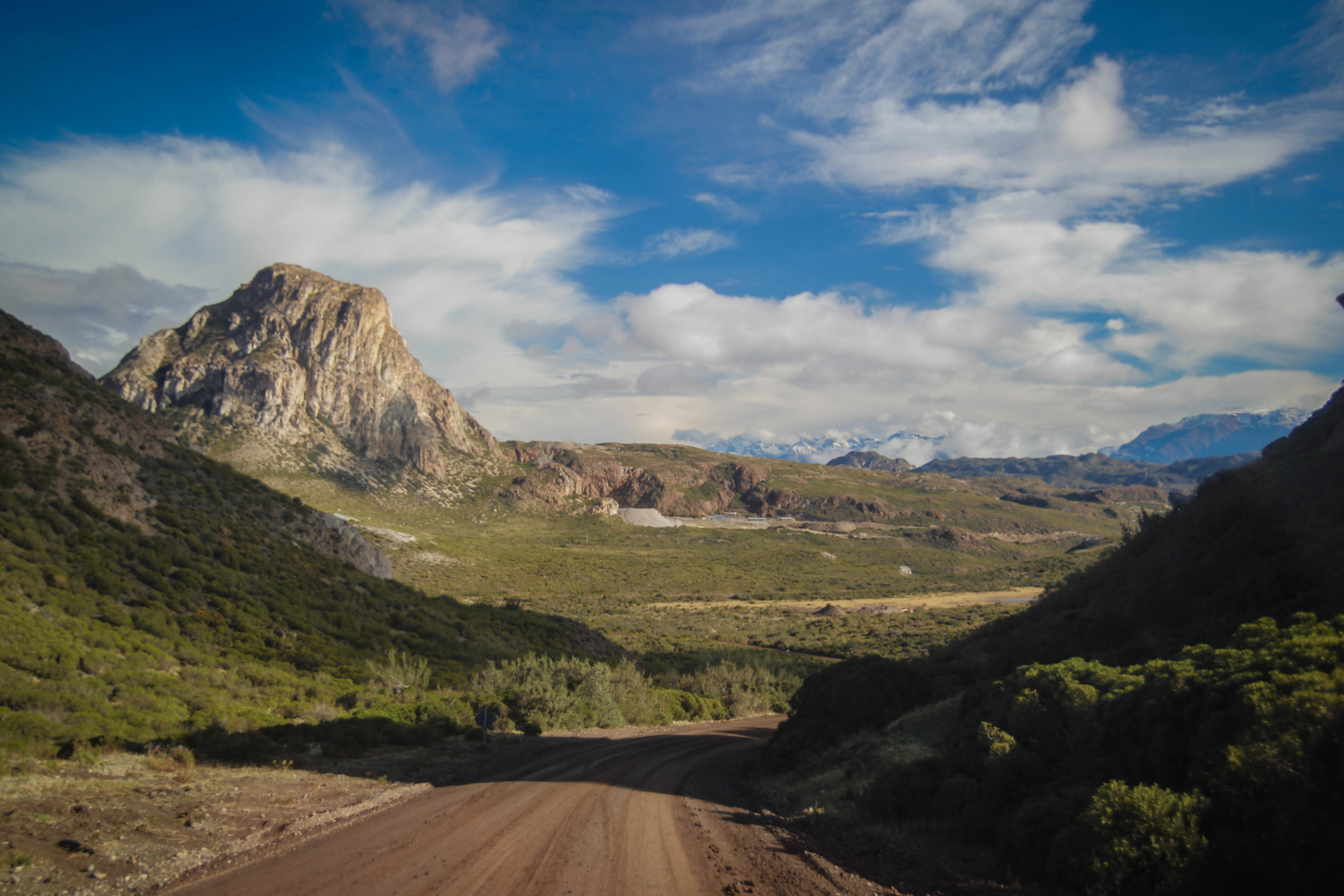




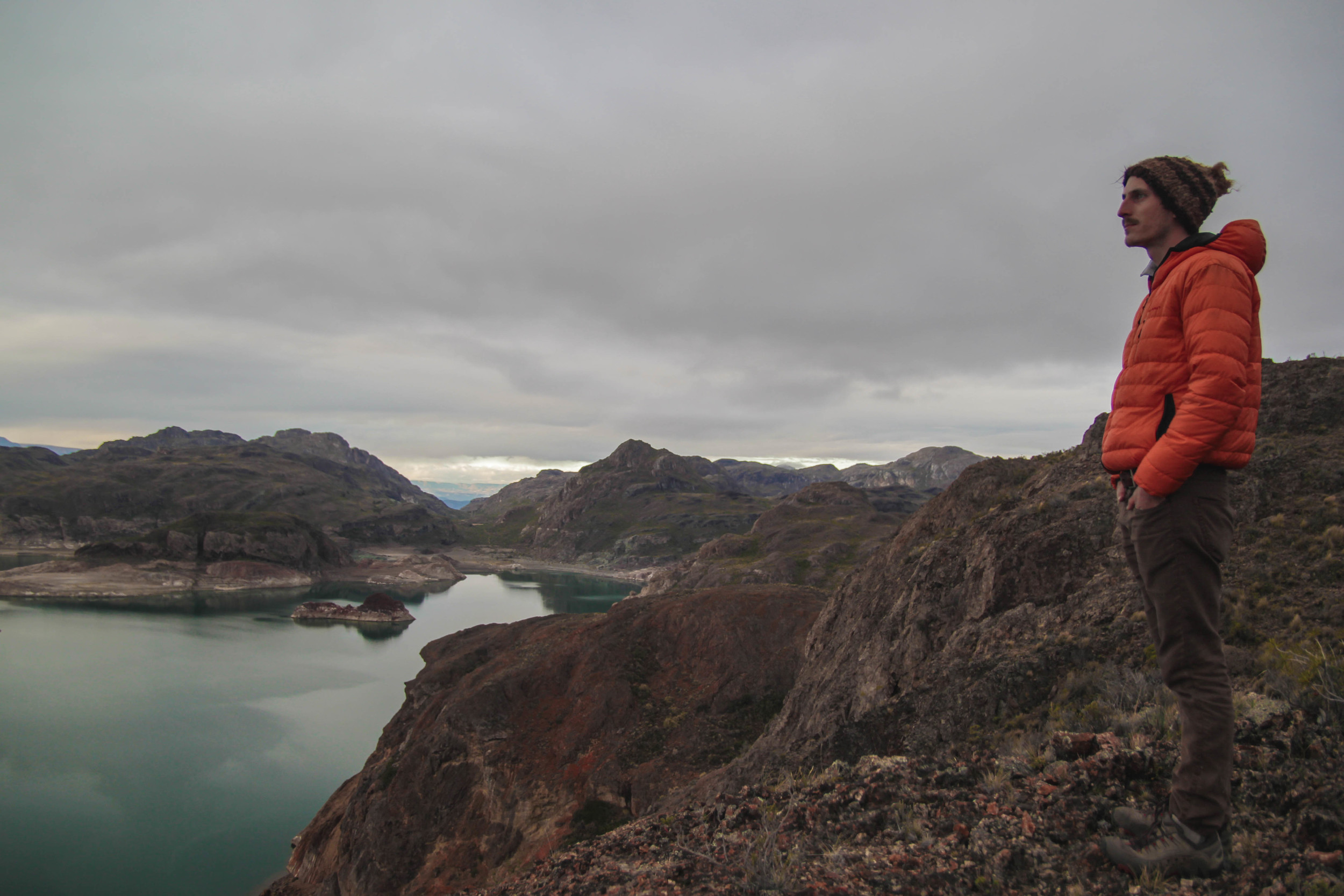





Up Next: We set our sights on the iconic Ruta 40 and all that Southern Patagonia has to offer!